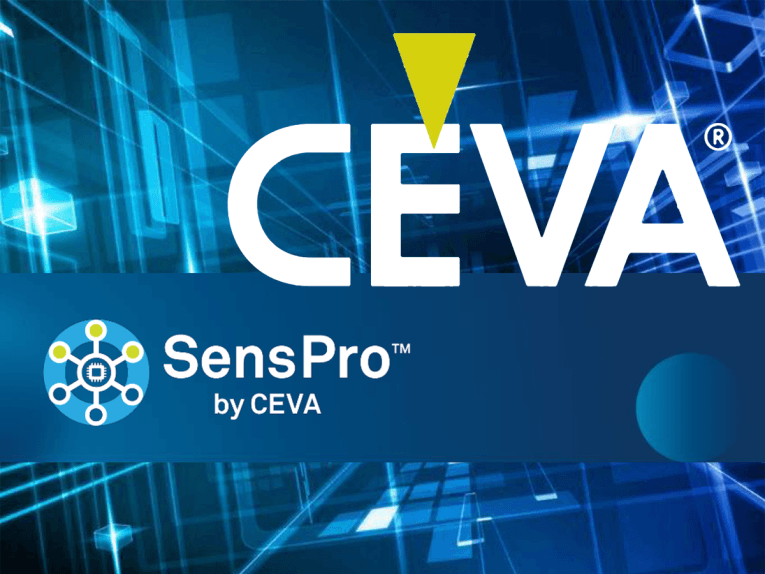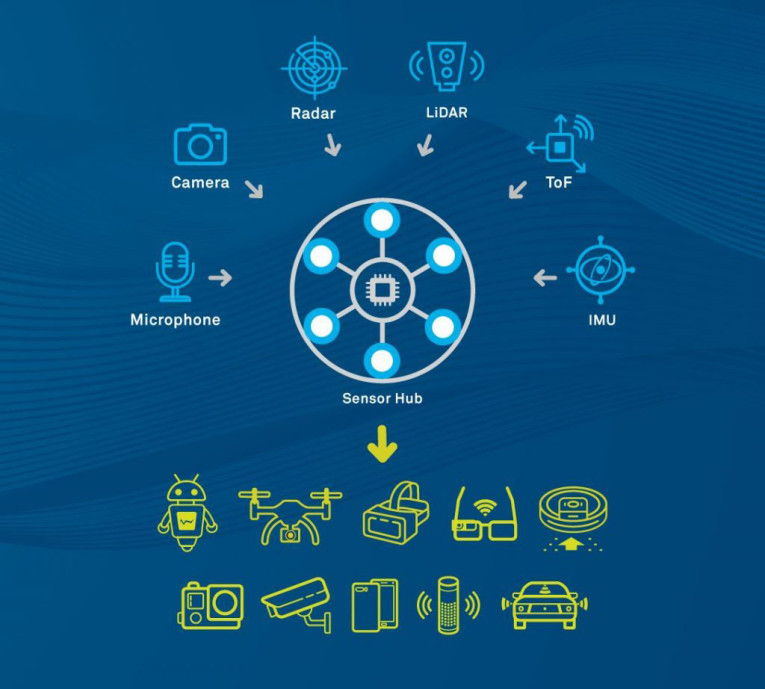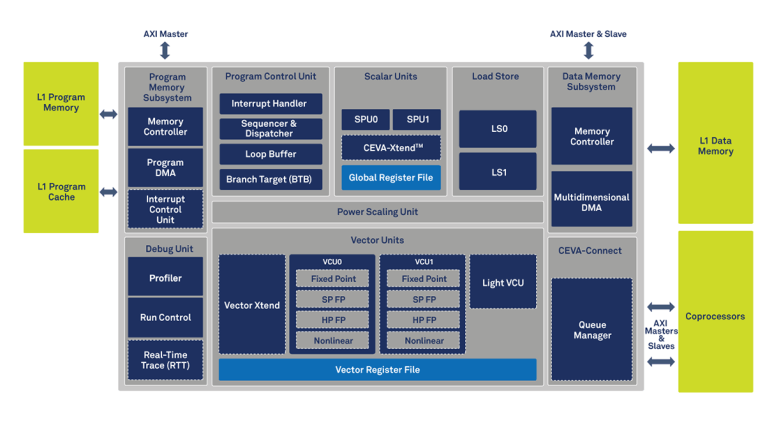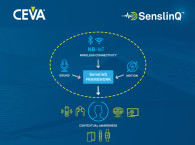
As CEVA explains, SensPro addresses the need for specialized processors to efficiently handle the proliferation of different types of sensors that are required in smartphones, robotics, automotive, AR/VR headsets, voice assistants, smart home devices and for emerging industrial and medical applications. Sensors for these applications generate a multitude of data types and bit-rates derived from imaging, sound, RF and motion, which can be used to create a full 3D contextually-aware device.
Built from the ground up to maximize performance-per-watt for complex multi-sensor processing use cases, the SensPro architecture offers a combination of high performance single and half precision floating-point math required for high dynamic range signal processing, point cloud creation and deep neural network (DNN) training, along with a large amount of 8- and 16-bit parallel processing capacity required for voice, imaging, DNN inference processing and Simultaneous Localization and Mapping (SLAM).

SensPro also incorporates CEVA’s widely used CEVA-BX scalar DSP platform, which offers a seamless migration path from single sensory system designs to multi-sensor, contextual-aware designs.
“The proliferation of sensors in intelligent systems continues to increase, providing more precise modeling of the environment and context. Sensors are becoming smarter, and the goal is not to get more and more data from them, but higher quality of data especially in cases of environment/surround perception such as environmental sensor hubs that use a combo of microphones, pressure, humidity, inertial, temperature and gas sensors (smart homes/offices), as well as situational awareness in ADAS/AV where many sensors (radar, LIDAR, cameras, IMU, ultrasonic, etc) must work together to make sense of their surroundings,“ states Dimitrios Damianos, technology & market analyst of the sensing division at Yole Développement (Yole).
“The challenge is to process and fuse different types of data from different types of sensors. Using a mix of scalar and vector processing, floating and fixed point math coupled with an advanced micro-architecture, SensPro offers system and SoC designers a unified processor architecture to address the needs of any contextually-aware multi-sensor device,” adds Yohann Tschudi, technology & market analyst, computing and software, at Yole.

SensPro uses a highly-configurable 8-way VLIW architecture, allowing it to be easily tuned to address a wide range of applications. It employs a state-of-the-art micro-architecture that combines scalar and vector processing units and incorporates an advanced, deep pipeline enabling operating speeds of 1.6GHz at a 7nm process node.
SensPro also incorporates a CEVA-BX2 scalar processor for control code execution with a 4.3 CoreMark/MHz score. It adopts a wide SIMD scalable processor architecture for parallel processing and is configurable for up to 1024 8x8 MACs, 256 16x16 MACs, dedicated 8x2 Binary Neural Networks support, as well as 64 single precision and 128 half precision floating point MACs. This allows it to deliver 3 TOPS for 8x8 networks inferencing, 20 TOPS for Binary Neural Networks inferencing, and 400 GFLOPS for floating point arithmetic. Other key features of SensPro include a memory architecture providing a bandwidth of 400GB per second, 4-way instruction cache, 2-way vector data cache, DMA, and queue and buffer managers for offloading the DSP from data transactions.
SensPro solutions are accompanied by an advanced set of software and development tools to expedite system designs including an LLVM C/C++ compiler, Eclipse based integrated development environment (IDE), OpenVX API, software libraries for OpenCL, CEVA deep neural network (CDNN) graph compiler including the CDNN-Invite API for inclusion of custom AI engines, CEVA-CV imaging functions, CEVA-SLAM software development kit and vision libraries, ClearVox noise reduction, WhisPro speech recognition, MotionEngine sensor fusion, and the SenslinQ software framework.

Initially, SensPro DSPs will be available in three configurations, each including a CEVA-BX2 scalar processor and various vector units configured for optimal use-case handling:
SP250 – single vector unit with 256 8x8 MACs targeting imaging, vision, and sound centric applications
SP500F – single vector unit with 512 8x8 MACs and 64 single precision floating point MACs targeting SLAM centric applications
SP1000 – dual vector units with 1024 8x8 MACs and binary networks support targeting AI centric applications
“With the growth in the number and variety of sensors in modern systems, and their substantially different computation needs, we set out to design a new architecture from the ground up to address this challenge. We constructed SensPro as a highly configurable, holistic architecture that could handle these intensive workloads using a combination of scalar, vector processing and AI acceleration, while utilizing the latest micro-architecture design techniques of deep pipelining, parallelism, and multi-tasking. The result is the most powerful DSP architecture ever conceived for sensor hubs and we’re truly excited to work with our customers and partners to bring contextually-aware products to market based on it,” states Ran Snir, Vice President of Research and Development at CEVA.
The SensPro architecture and cores will be made available for general licensing starting in Q3 2020.
www.ceva-dsp.com/product/ceva-SensPro






